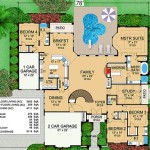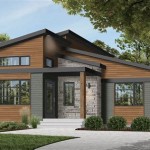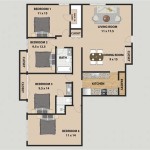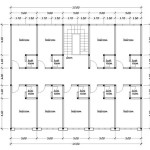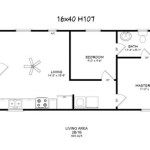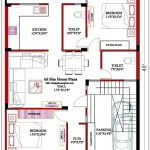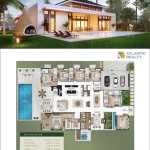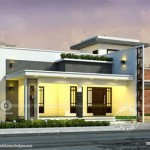Assisted Living Home Plans
Assisted living homes provide a crucial bridge between independent living and skilled nursing care for seniors who require assistance with daily activities but don't need 24-hour medical supervision. Developing effective assisted living home plans requires careful consideration of various factors, from resident needs and regulatory compliance to building design and operational efficiency.
A comprehensive assisted living home plan encompasses several key areas. Firstly, it addresses the physical layout and design of the facility. This includes considerations for accessibility, including ramps, widened doorways, grab bars, and adaptable bathroom fixtures. The plan also outlines the configuration of resident rooms, common areas, dining facilities, and activity spaces. Creating a comfortable and stimulating environment is paramount to promoting resident well-being.
Secondly, the plan details the services and amenities offered. These may range from assistance with bathing, dressing, and medication management to meal preparation, housekeeping, and laundry services. It is essential to offer a range of services that cater to diverse resident needs and preferences. The plan should also outline the staffing structure, including the qualifications and training requirements for caregivers and other personnel.
Regulatory compliance is another crucial aspect of assisted living home plans. These regulations vary by state and often include specific requirements for building codes, fire safety, staffing ratios, and resident care standards. Adherence to these regulations is mandatory for obtaining and maintaining operating licenses. The plan must demonstrate a clear understanding and implementation of these requirements.
Financial projections and operational strategies are also integral to the plan. A detailed budget should outline expected revenues, expenses, and projected profitability. This includes cost estimates for staffing, supplies, utilities, maintenance, and marketing. The plan should also address marketing strategies to attract residents and establish a positive reputation within the community.
Technology plays an increasingly important role in assisted living home plans. Integrating technology can enhance resident safety, improve communication, and streamline operations. This may include implementing electronic health records, resident call systems, security systems, and automated medication dispensing systems. The plan should address the selection, implementation, and ongoing maintenance of these technologies.
Resident engagement and activity programming are vital components of a successful assisted living home. The plan should outline a diverse range of activities that cater to different interests and abilities. These may include social events, recreational activities, educational programs, and opportunities for community involvement. Promoting social interaction and mental stimulation contributes significantly to resident well-being.
Dining services are another critical aspect to consider. The plan should outline meal planning, preparation, and service procedures. Nutritional needs and dietary restrictions of residents must be carefully considered. Providing appealing and nutritious meals in a comfortable and social setting is essential.
Emergency preparedness is a crucial component of any assisted living home plan. The plan should outline procedures for handling various emergencies, including fires, natural disasters, and medical emergencies. Regular drills and staff training are necessary to ensure effective response in emergency situations.
Staff training and development are key to providing quality care. The plan should outline comprehensive training programs for all staff members, covering topics such as resident care, medication management, emergency procedures, and communication skills. Ongoing professional development opportunities are essential to maintaining a high standard of care.
Community integration is an important consideration for assisted living home plans. Facilitating opportunities for residents to engage with the wider community can enhance their quality of life. This may involve organizing outings, partnering with local organizations, and encouraging participation in community events.
Regular evaluation and adjustments to the assisted living home plan are essential for continuous improvement. Monitoring key performance indicators, gathering feedback from residents and staff, and staying informed about industry best practices can inform necessary adjustments to the plan. This ensures the ongoing effectiveness and relevance of the plan in meeting the evolving needs of the residents.
Finally, designing a welcoming and aesthetically pleasing environment is a crucial element of assisted living home plans. Careful attention to interior design, landscaping, and the overall ambiance of the facility can create a positive and comfortable living environment for residents. This includes selecting appropriate furnishings, color schemes, and artwork to create a warm and inviting atmosphere.

Floor Plan Assisted Living Supports Bross Street

Senior Housing Building Plans How To Plan Floor Assisted Living

Example Image Assisted Living Residential Unit Plan Facility Duplex Floor Plans Senior Facilities

Assisted Living Floor Plans Senior Community In San Antonio The Lodge At Leon Springs
Getting Better With Age Design For Senior And Assisted Living Facilities Architect

Plan 012c 0001 The House

Sem Haven Floor Plans

Countryside Villa Assisted Living Facility Wausa Nebraska Features

Plan Of Assisted Living Facility And Extra Care Housing Below In Scientific Diagram

Teal Lake Senior Living Community

